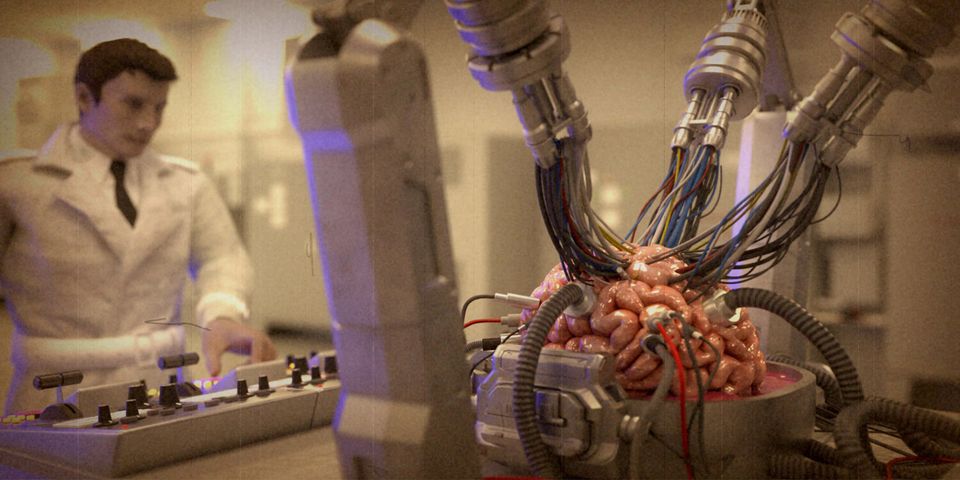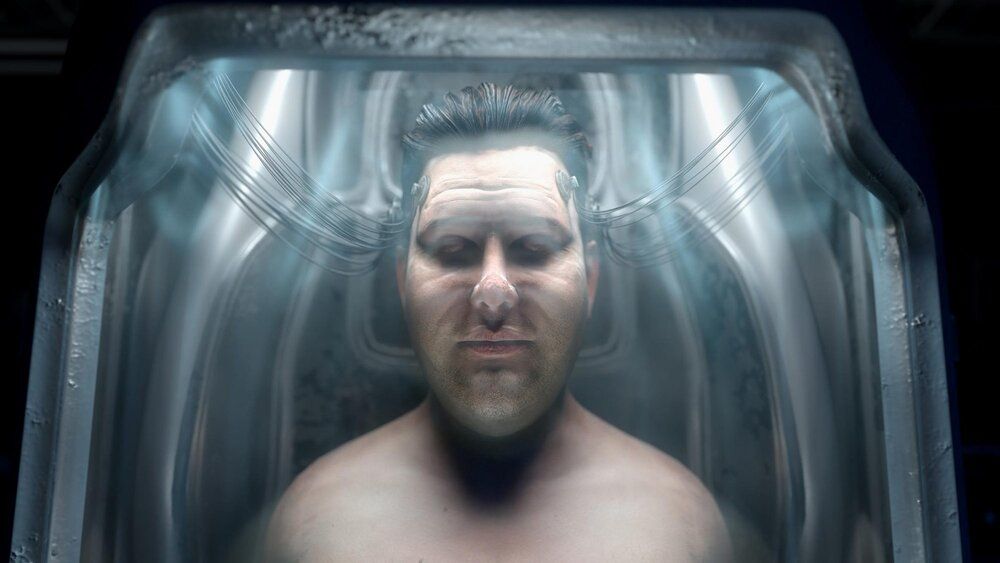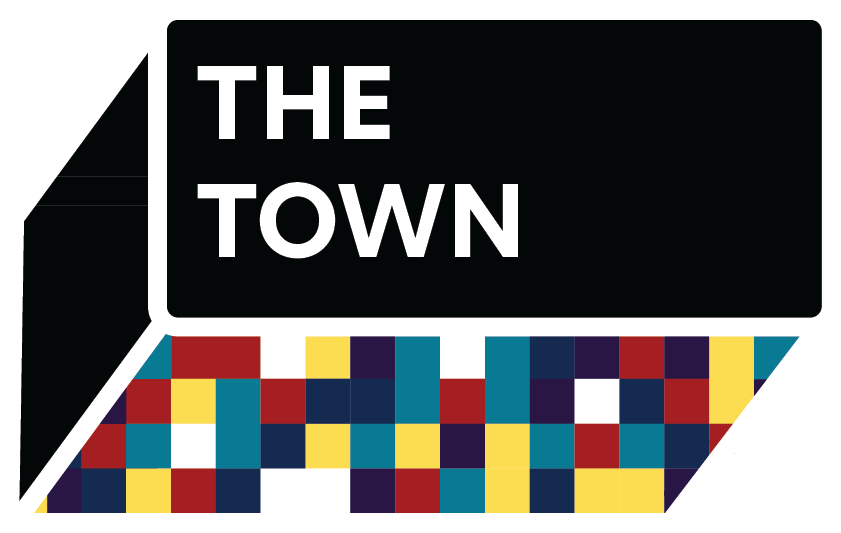'A Glitch In The Matrix' is afraid of the wrong simulated worlds.

This article contains a reference to graphic violence
One of my top five experiences going to the movies of all time came at the Hot Docs festival in 2015 (or was it ‘16? forgive me!). Crowding into the already creepy, on its own, Hart House Theatre I descended through its labyrinth entranceway and squinted in the dark to find my seat in what was effectively a dungeon (I miss you HH!). On the ticket: The Nightmare directed by Rodney Ascher - which made itself unmissable in that year’s festival lineup by billing itself as a hybrid documentary-horror.
The Nightmare delivers. Its subject is sleep paralysis, and through a mix of traditional documentary interviews and nightmarish recreation, it remains one of the creepiest cinematic experiences in my memory. In the pitch black of Hart House, a packed theatre was pin-drop silent - all of us encapsulated by the claustrophobic experiences of those who live with sleep paralysis - including the unforgettably universal folklore that animates their hallucinations. This movie - and its layered basis in our actual reality - prevented me from sleeping soundly for weeks. While that’s not for everyone, for those who seek out horror of that caliber, and are likely numb to the scare factor of most films in the genre by now, it’s worth a look.
That’s why in many ways, moving on to today, I was a bit disappointed by Ascher’s latest offering: A Glitch In The Matrix - currently available to stream through Hot Docs virtual cinema.
The world we’re brought into by Ascher this time is a fake one - at least according to the community he is profiling: subjects who believe our reality is a simulation. While the exact shape, reasoning, functionality, and agency we have in that simulation is disputed among them - the overall conceit is consistent: the world you’re reading this in is constructed by someone and you’re just tangled lines of code going through the motions.
I think Ascher has done a good job at identifying the rare paydirt needed to make a horror documentary work. This time around If the very reality we exist in can be questioned, and if his cast of true believers can convince you to begin questioning it, the film, properly executed, should torment your every waking hour in the same way The Nightmare haunts your dreams. The lines of code are all there, they even seem to be looping as intended, yet when executed the simulation seems off.
It’s something I didn’t really notice until Neo makes his appearance. Depicted, of course, by Keanu Reeves the fresh-faced and iconic hacker-turned-Messiah from The Wachowskis’ 1999 classic. He is a key character - via reference - in this film. His journey to, at first, break out of the Matrix and then save the lost souls in it - is credited as the moment simulation theory went from obscure philosophical debates - and literary lectures - to the mainstream. As such it’s a major motif, and narrative engine, of the film.
Yet pulled back Neo and The Matrix, are only one example of the dozens of references made in the film that point out our pop-culture’s now intimate connection to simulated worlds. Grand Theft Auto, Minecraft, and Fallout all get screentime. Google Earth with its blocky and glitchy 3D renderings of our cities and homes, replaces the drone footage montages typical in documentary with literal uncanny valleys. Each talking head - interviewed on Zoom (or an equivalent) - is swapped out for their own cheeky avatar. Even Reeve’s himself, appearing on screen in this early-2021, cannot help but conjure up thoughts of the broken and beautiful world of Cyberpunk 2077 by sheer virtue of proximity.
Yet I could not help but feel, as I watched those iconic Matrix sequences play out, that the seed of horror Ascher was looking to grow in this script is rooted firmly in 1999. One of the reasons The Matrix was great is because it played on, and dreamed up the horrors possible in the simulated realities we would one day create, long before we could actually create them.
This anxiety peaks in the film’s most horrifying sequence. Where one of Ascher’s subjects, Joshua Cooke, describes the events that led to him killing his parents with a shotgun at point-blank range because of his belief in simulation theory. Having obsessively watched The Matrix hundreds of times he simply thought that the world he lived in was not real. He murdered his parents out of a desperate need to wake up.
This story, sadly very real, is told with a shocking set-piece: a digital reconstruction of the Cooke’s family home in a barren digital simulation. The viewer walks through that faithful day as a disembodied avatar, with Joshua’s perspective. As he describes his decisions and actions you’re carried through a broken and fragmented nightmare world which is populated only by jagged architectural assets and rendered objects - but thankfully no people - as the violence, and senseless loss, are all the while communicated clearly.
It’s this specific rewiring that Ascher seems to be most intent at communicating and building his film’s horror around. Embedded in the visual metaphor of his climax there seems to be the same lingering anxiety that once commonly rallied against the power of violent video games to cause violent behaviour. It’s that emphasis and stark fear of the virtual world generally that seems out-of-place in 2021 when the virtual world, and the far more specific nefarious corners of it, are so much better understood by us today.

School shooters, terrorists, Capitol Hill rioters, are all, like Ascher’s subjects, living in a simulated reality of their own creation or buy-in. In almost all cases fueled by media ecosystems and virtual feedback loops that perpetuate broken ideology until it becomes fact. A mix of psychosis fixated on an iteration of simulation theory may have driven Cooke to violence, but that violence and his specific simulation is obscure enough to build a niche documentary around with built-in uncanny digital aesthetics that lend themselves to a solid marketing gimmick.
But simulation theory does not currently shape the contours of our political world. Yet simulations, of a sort, open up restaurants in a pandemic while ICUs reach capacity. Only in the rarest of cases - does simulation theory build up an active ideology around dehumanizing and violently acting out against people other than us - and yet racist, homophobic and colonial worldviews cause this violence daily. It’s the other, far more pervasive, and systemic virtual realities people create for themselves, swirling all around us, that feel missing from the final cut.
While Ascher makes passing references to these issues - such as the infamous Sinclair propaganda rally - notable omissions like QAnon and climate skepticism stand out, or surface so briefly they are lost in the general churn of the creepy digital renderings the film is far more interested in.
Perhaps, in all fairness, A Glitch In The Matrix should not be held accountable for themes it did not set out to focus on. As an escapist and slick explainer documentary profiling an obscure and fascinating subculture, this film absolutely works. If you’re into the weird parts of our digital reality, and/or the creepy corners of the games industry and the internet then the film is for you.
Still, in today’s world it’s hard not to notice when a film tees up a perfect exploration of how human it is to confuse reality with unreality, and then - for whatever reason - seems to unplug.
—-
A Glitch In The Matrix is available to stream through the Hot Docs Virtual Cinema for $9.99
The Nightmare is available on Amazon Prime
The Matrix is available on Netflix, Prime, Google Play, and Youtube
(Links live at the time of publication)





